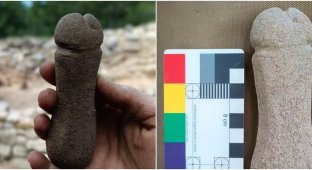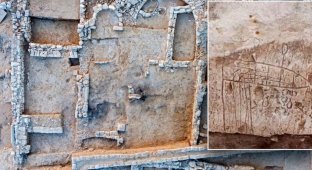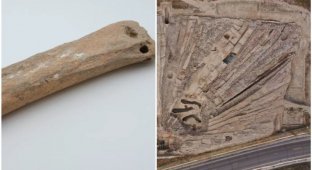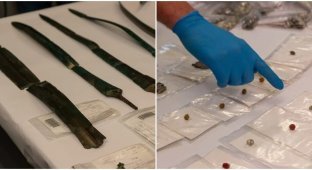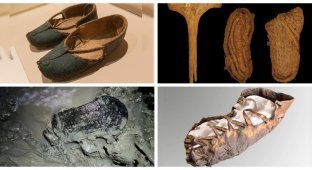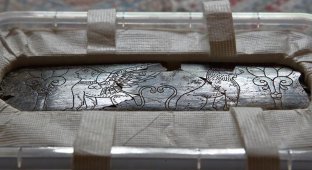Archaeologists have found an early Christian relic depicting Moses receiving the 10 Commandments (10 photos + 1 video)
During excavations of an ancient church in the Austrian village of Irschen, archaeologists discovered a valuable artifact depicting biblical scenes - including Moses receiving the Ten Commandments from God on Mount Sinai. The last time something like this was found was a hundred years ago! 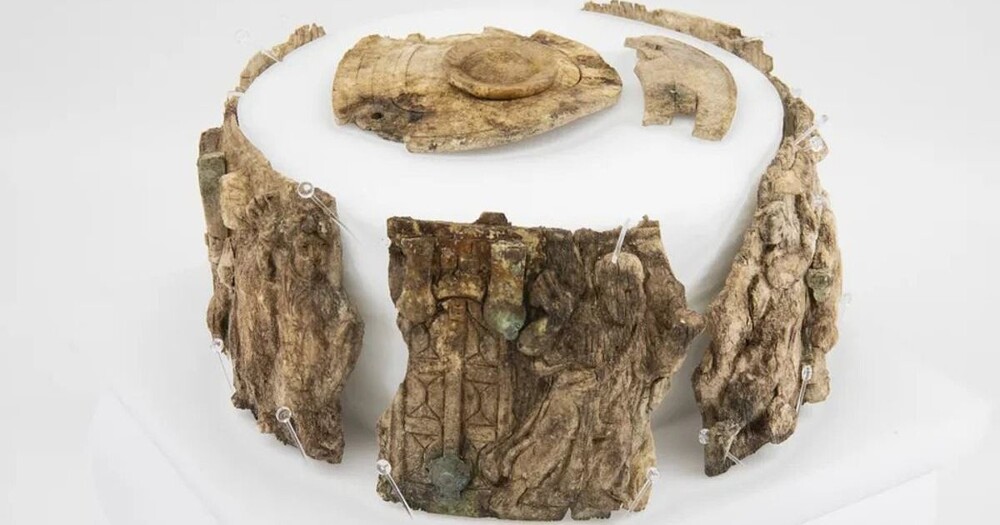
Archaeologists consider this relic a significant find, since sacred objects from early Christianity are extremely rare. The researchers noted that only 40 similar finds have been made in the world, with the last one discovered during excavations about 100 years ago.
“We know that this only happens once in the lifetime of an archaeologist and a scientist,” says Gerald Grabherr, lead archaeologist. 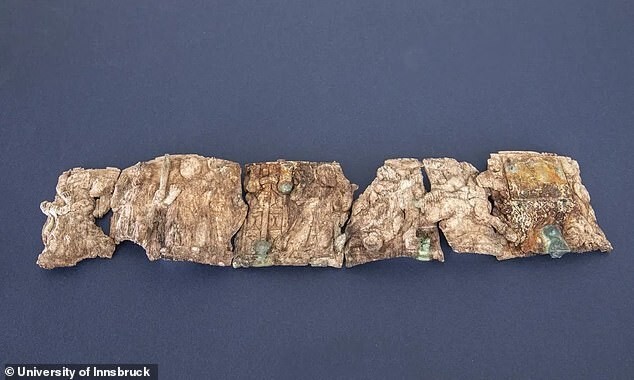
The Roman Emperor Constantine the Great converted to Christianity with the Edict of Milan in 313 AD, which legalized the religion and promoted tolerance of Jews. Then, in 380 AD, Emperor Theodosius issued the Edict of Thessalonians, which made Christianity the official religion of the Roman Empire.
The discovery was made by researchers from the University of Innsbruck, who were excavating an early Christian church that once stood on the top of the Burgbichl mountain in the commune of Irschen in southern Austria. The region once belonged to the Roman Empire, and the church was most likely a pagan sanctuary before imperial law was passed more than 1,600 years ago. 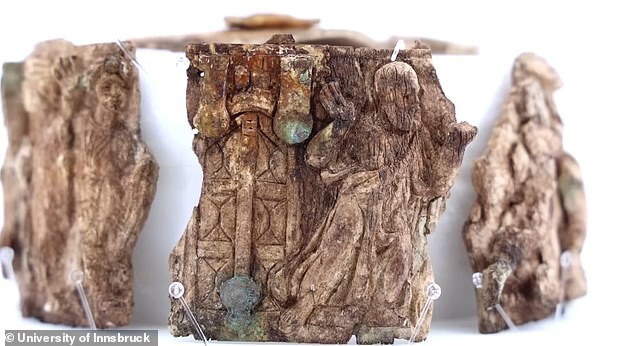
Scientists discovered a sealing stone in a hole similar to a pit where the altar once stood, and after removing it, they took out a white marble box. The most surprising thing is that it was not empty! 
The item in the box is made of ivory and looks like a box. This box is decorated with intricate carvings. She is 1500 years old. It was found broken into pieces, but after assembly it is a circle with a diameter of about 10 centimeters. 
Apparently, this is nothing more than a monstrance - a vessel that priests use for communion outside the church (for example, for giving communion to the sick at home). According to researchers, it was securely hidden even before the church was abandoned, and for some reason no one took it.
On one side of the artifact, according to researchers, is a scene of Moses receiving the Ten Commandments from God on Mount Sinai. The second shows the scene of the ascension of Jesus or the prophet Elijah.
“The head is turned the other way, and with this image we can imagine God giving the law to Moses,” says Dr. Barbara Kainrath, who participated in the study. - The second scene that we can clearly see is a figure being lifted up by a hand coming out of a cloud - the hand of God. And here we are dealing with ascension. In addition to the hand of God, a team of horses is also shown here. Two horses and a cart wheel."
There are several passages in the Bible with two horses, including Revelation 19:11, which says “And I saw the heavens opened, and behold, a white horse and one who sat on it. He is called Faithful and True, He judges and fights with justice.” The Book of Exodus also tells us that the Egyptians used horses and chariots to pursue Moses and the Israelites.
However, researchers noted that this could also be an image of the ascension of the prophet Elijah to heaven. The Second Book of Kings reads: “As they continued to walk and talk, a chariot of fire and horses of fire separated them, and Elijah ascended by a whirlwind into heaven.” 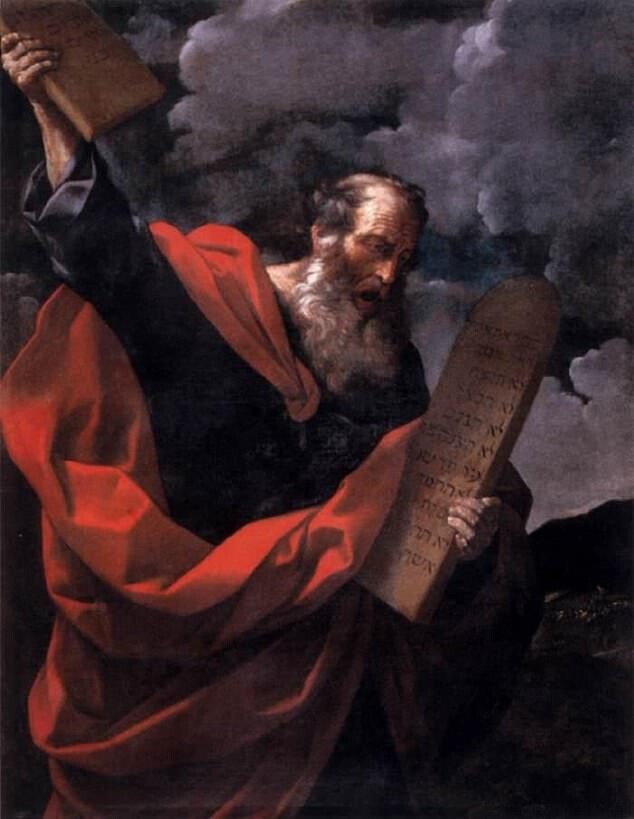
Although the monstrance was found in southern Austria, it is unlikely to have been made there. The high quality of workmanship and sophistication of the piece suggest that it was created in a major urban center such as Alexandria, Ravenna or Aquileia. 
It is possible that the sacred vessel had already been broken before it was placed in the large marble box found under the sanctuary of the ancient church. The researchers also noted that some parts of the monstrance, such as fittings and fragments of relief on the outer wall, are missing. 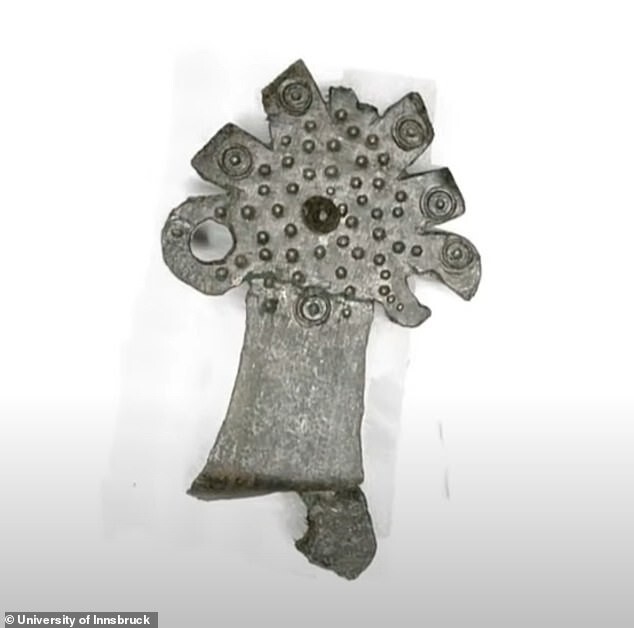
“Clasp” of the monstrance made of wood and metal
This find provides valuable information about early Christianity and the history of southern Austria. It is also a rare opportunity to see sacred objects that were used by early Christians.
The church in which the monstrance was found had impressive dimensions - about 18 meters in length. There was a marble threshold at the entrance, and graves were located in the south and west. 
Archaeologists have discovered the remains of people who once lived in this region and, in their opinion, belonged to a higher social class. 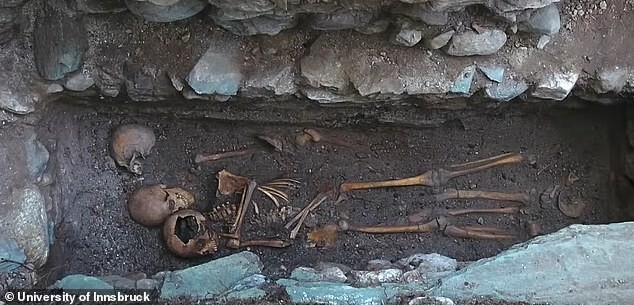
Researchers believe that in late antiquity, between the 3rd and 7th centuries AD, between 200 and 300 people lived in the area. The remains of three adults, a teenager and four children have been recovered and will be examined at the Natural History Museum in Vienna. Scientists emphasize that people did not die at the same time and were buried one after another.












